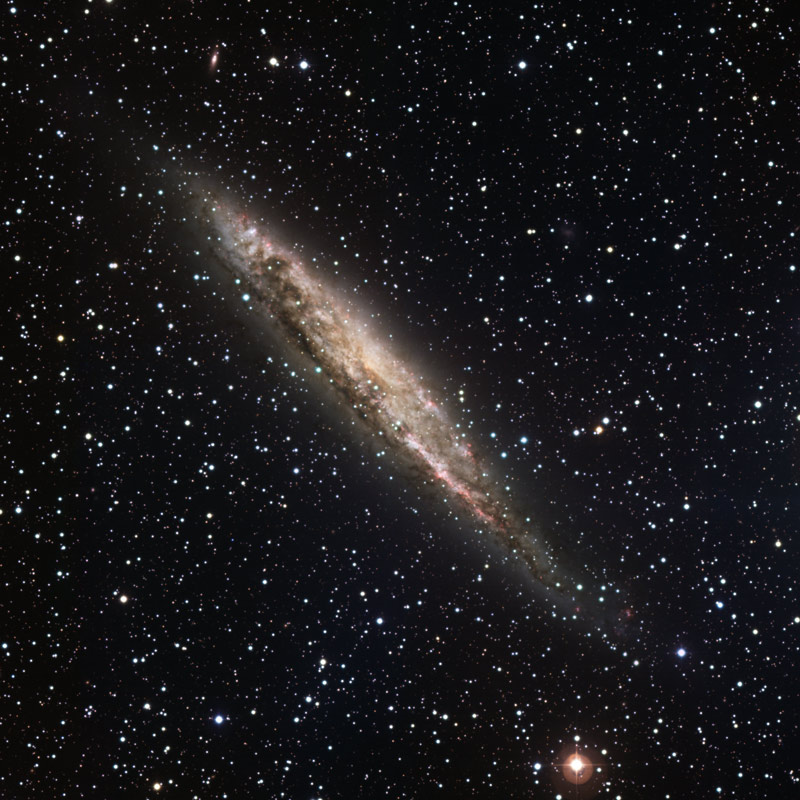NGC 4945 seems to be a spiral galaxy with swirling, luminous arms and a bar-shaped central region, though NGC 4945 has a brighter center that likely harbors a supermassive black hole which is devouring reams of matter and blasting energy out into space.
As NGC 4945 is only about 13 million light-years away in the constellation of Centaurus (the Centaur), a modest telescope is sufficient for skygazers to take a look. NGC 4945’s designation comes from its entry number in the New General Catalogue compiled by the Danish–Irish astronomer John Louis Emil Dreyer in the 1880s. James Dunlop, a Scottish astronomer, is credited with originally discovering NGC 4945 in 1826 from Australia.
This video zooms in on the spiral galaxy NGC 4945, starting with a wide-angle view made with an amateur telescope, then to an image from Digitized Sky Survey 2, and finishing with an image made with the 2.2-metre MPG/ESO telescope at La Silla. Credit: ESO, Digitized Sky Survey 2, A. Fujii. Music by John Dyson from the CD Darklight
Today’s new portrait of NGC 4945 comes courtesy of the Wide Field Imager (WFI) instrument at the 2.2-metre MPG/ESO telescope at the La Silla Observatory in Chile. NGC 4945 appears cigar-shaped from our perspective on Earth, but the galaxy is actually a disc many times wider than it is thick, with bands of stars and glowing gas spiralling around its centre. With the use of special optical filters to isolate the colour of light emitted by heated gases such as hydrogen, the image displays sharp contrasts in NGC 4945 that indicate areas of star formation.
Other observations have revealed that NGC 4945 has an active galactic nucleus, meaning its central bulge emits far more energy than calmer galaxies like the Milky Way. Scientists classify NGC 4945 as a Seyfert galaxy after the American astronomer Carl K. Seyfert, who wrote a study in 1943 describing the odd light signatures emanating from some galactic cores. Since then, astronomers have come to suspect that supermassive black holes cause the turmoil in the centre of Seyfert galaxies.

NGC 4945. Sites of active star formation, known as H II regions, are seen prominently in the image, appearing bright pink. These resemblances aside, NGC 4945 has a brighter centre that likely harbours a supermassive black hole, which is devouring reams of matter and blasting energy out into space. NGC 4945 is about 13 million light-years away in the constellation of Centaurus (the Centaur) and is beautifully revealed in this image taken with data in five bands (B, V, R, H-alpha and S II) with the 2.2-metre MPG/ESO telescope at La Silla. The field of view is 30 x 30 arcminutes. North is up, East is to the left. Credit: ESO
Black holes gravitationally draw gas and dust into them, accelerating and heating this attracted matter until it emits high-energy radiation, including X-rays and ultraviolet light. Most large, spiral galaxies, including the Milky Way, host a black hole in their centres, though many of these dark monsters no longer actively “feed” at this stage in galactic development.





Comments